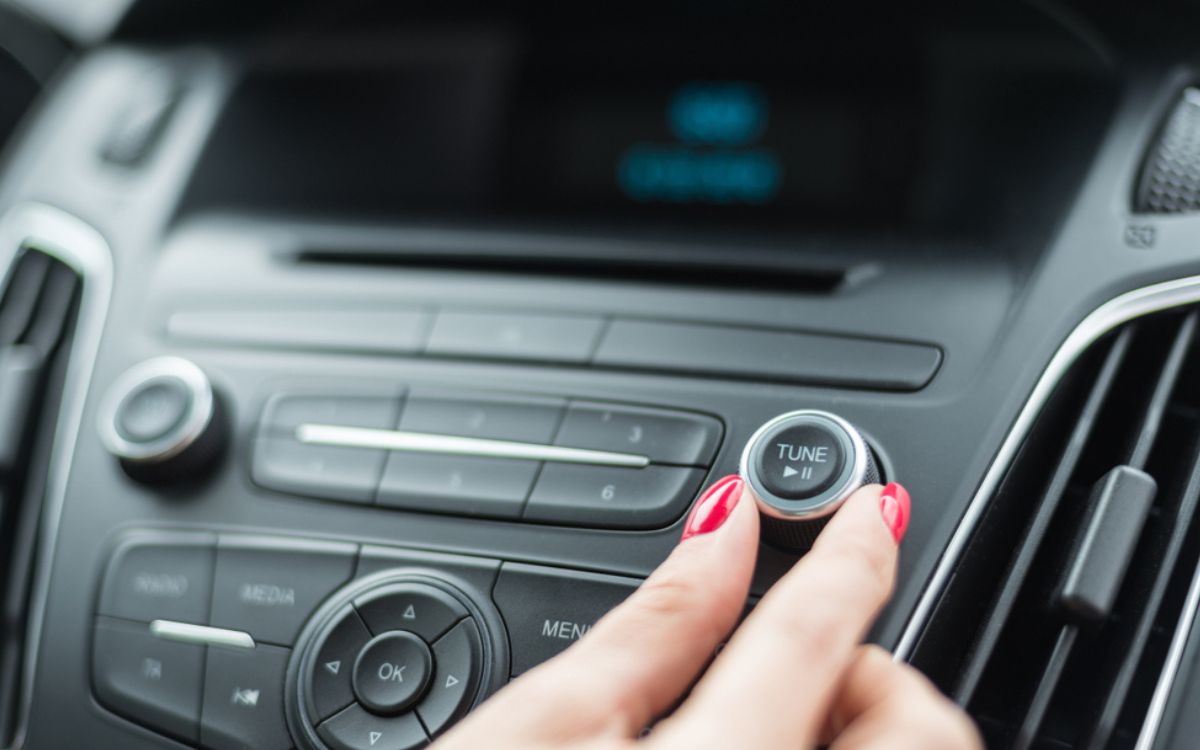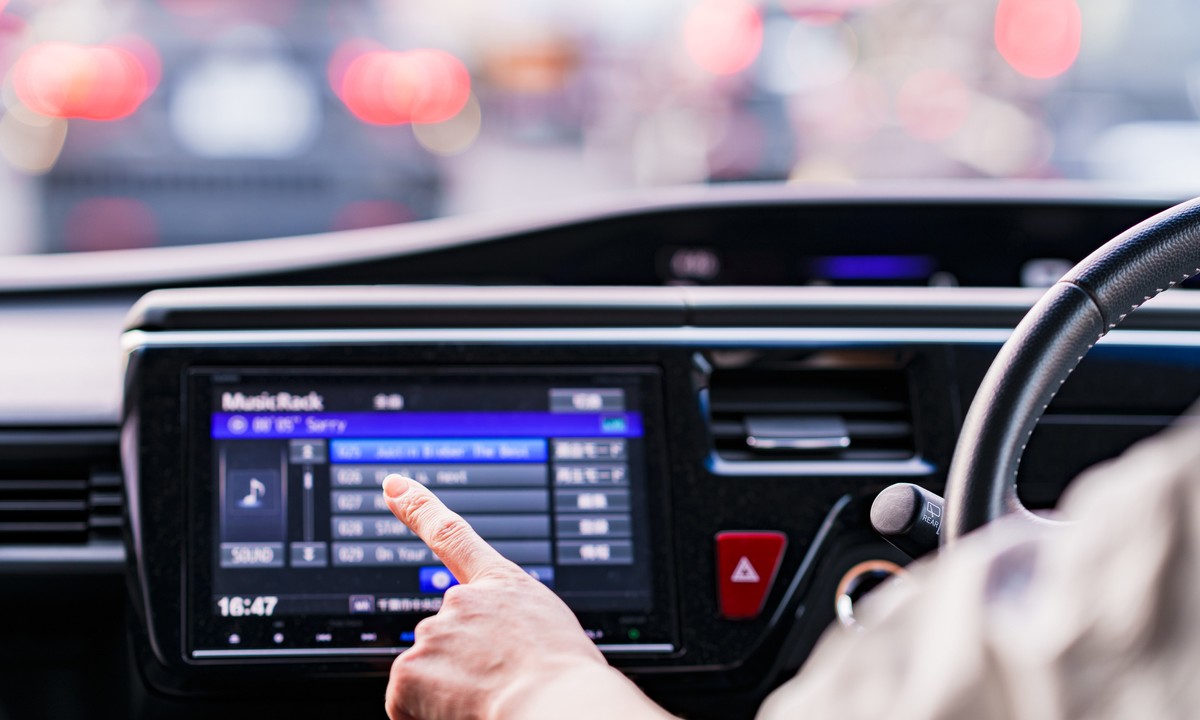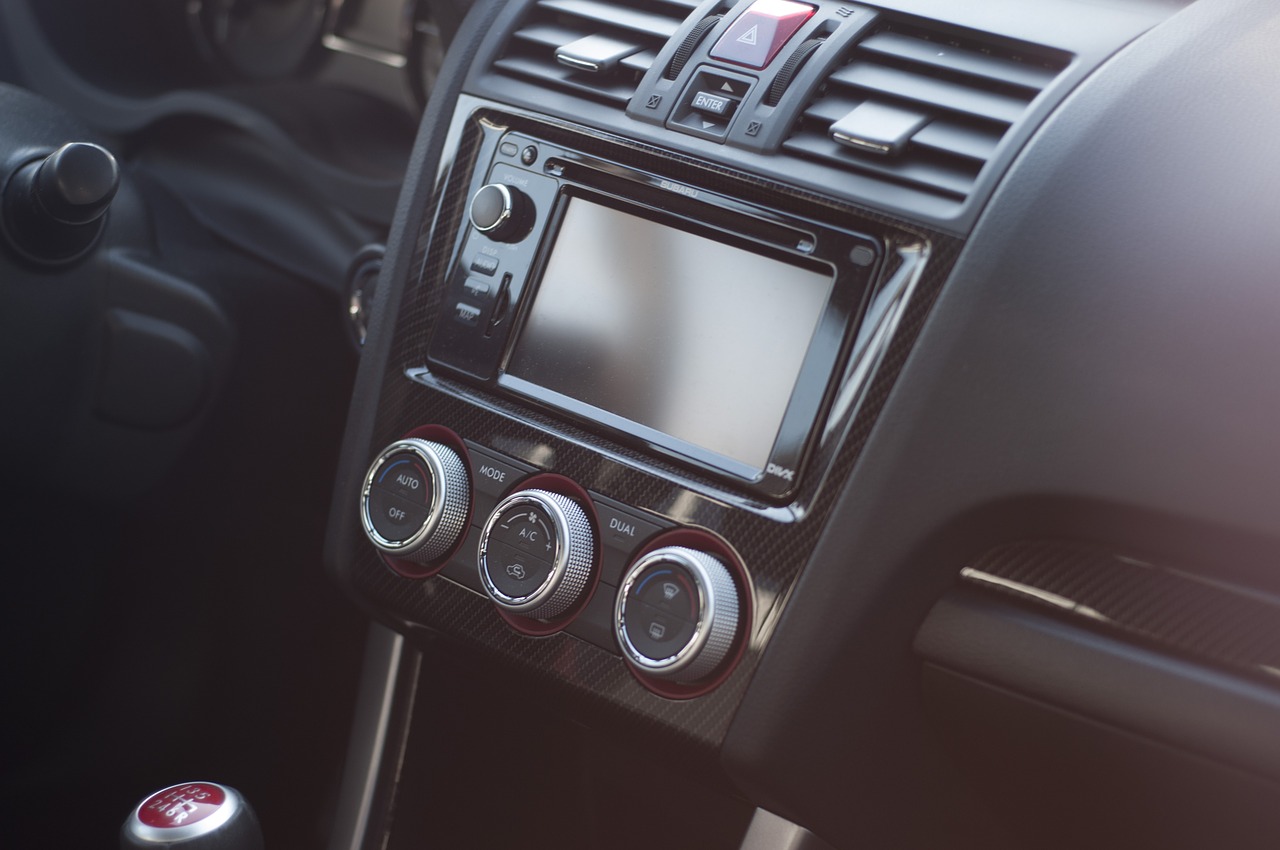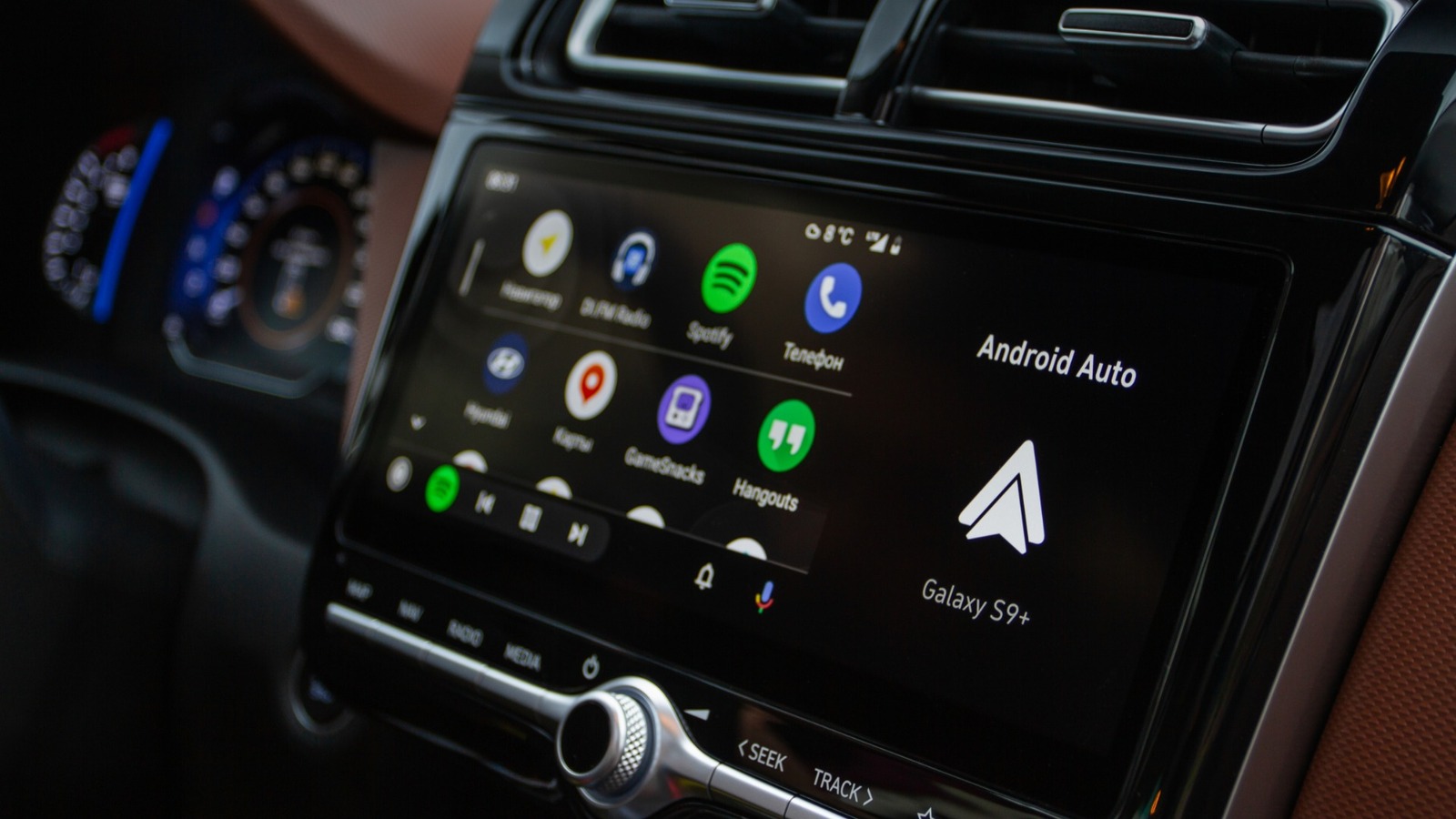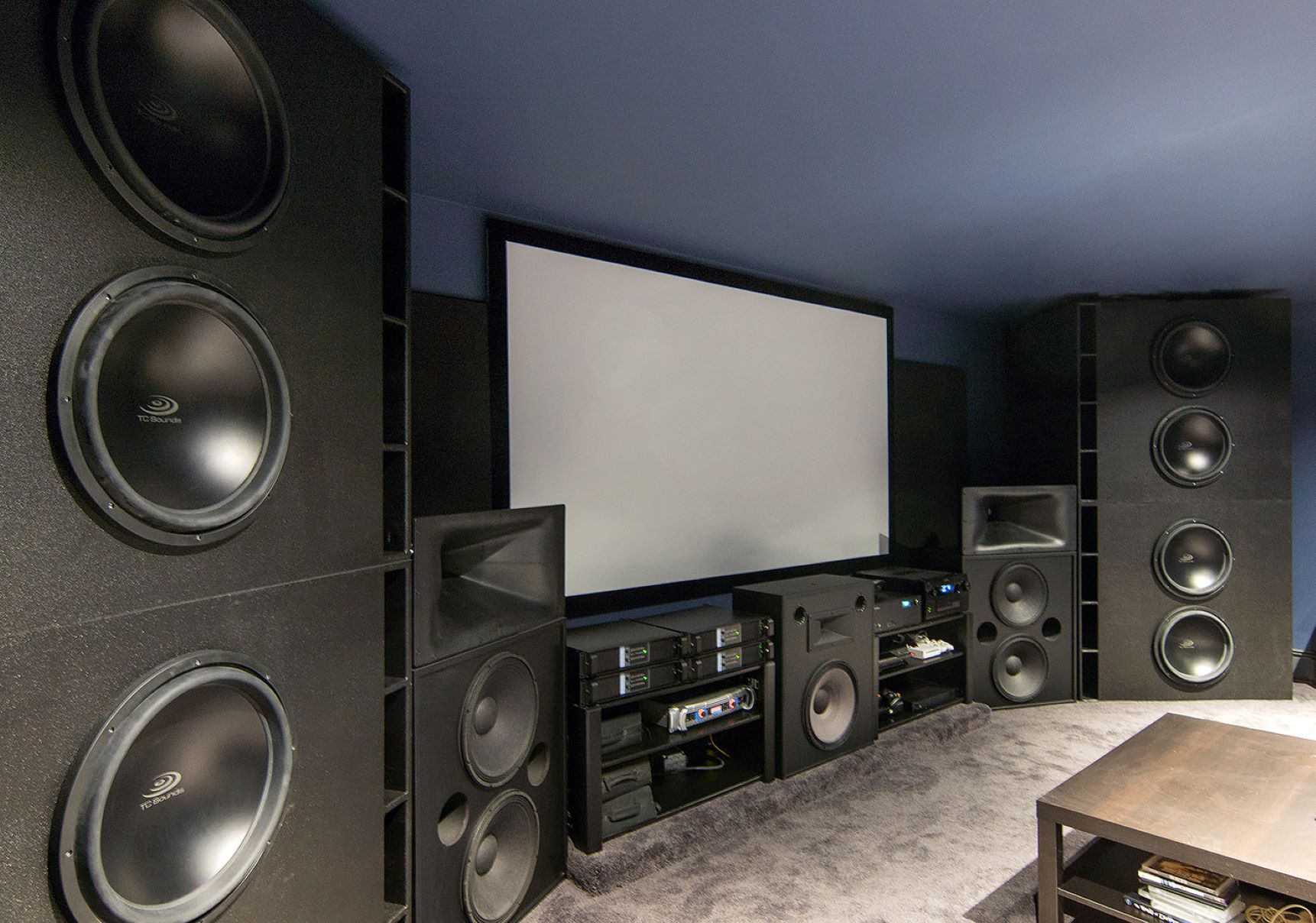Home>Production & Technology>Stereo>What To Look For When Buying A Car Stereo


Stereo
What To Look For When Buying A Car Stereo
Modified: January 22, 2024
Looking to upgrade your car stereo? Discover the key factors to consider when purchasing a new stereo system. From sound quality to compatibility, make an informed decision before you hit the road.
(Many of the links in this article redirect to a specific reviewed product. Your purchase of these products through affiliate links helps to generate commission for AudioLover.com, at no extra cost. Learn more)
Table of Contents
Introduction
When it comes to enhancing your driving experience, one of the most important components to consider is the car stereo system. A good car stereo not only provides high-quality audio but also offers a range of features and connectivity options to keep you entertained during your journeys. Whether you’re a music enthusiast or someone who enjoys listening to podcasts or audiobooks while on the road, selecting the right car stereo is vital.
In this comprehensive guide, we will explore the key factors to look for when buying a car stereo. From compatibility with your car model to audio quality, power output, display features, connectivity options, control options, user interface, built-in features, price range, installation process, warranty, and customer support, we will cover it all.
With so many options available on the market, choosing a car stereo that meets your needs can be overwhelming. Hence, it’s important to conduct thorough research and consider various factors before making a purchase. So, let’s dive in and explore what you should consider when buying a car stereo.
Compatibility with your car model
Before diving into the world of car stereos, it’s essential to ensure compatibility with your car model. Not every car stereo will fit seamlessly into every vehicle, as different car models have varying dash sizes and wiring configurations. Therefore, it’s crucial to determine which car stereos are compatible with your specific car make and model.
One way to determine compatibility is to consult your car’s owner’s manual or seek information from your car’s manufacturer. These resources often provide specifications regarding the size and layout of the car’s dashboard, which can help you identify which car stereo options will fit properly.
Another reliable method is to use online compatibility tools or consult with knowledgeable professionals at car audio specialty stores. These tools can provide you with accurate information about which car stereo models are compatible with your car. Additionally, professionals at specialty stores can offer expert advice based on their experience and knowledge in the field.
When considering compatibility, it’s also important to check the wiring configuration of your car. Some car models have complex wiring systems that may require additional adapters or harnesses to integrate the new stereo properly. These adapters and harnesses ensure a seamless connection between the car’s wiring and the stereo system, avoiding any compatibility issues.
Remember, investing in a compatible car stereo is crucial to avoid any alterations or modifications to your car’s original aesthetics or functionality. By ensuring compatibility, you can enjoy a hassle-free installation process and ensure that the car stereo fits perfectly into your car’s dashboard.
Audio Quality
When shopping for a car stereo, one of the most important factors to consider is the audio quality it provides. After all, the primary purpose of a car stereo is to deliver exceptional sound while you’re on the road.
There are a few key aspects to evaluate when it comes to audio quality. First and foremost is the power output of the car stereo. The power output is measured in watts and determines how loud and clear the sound can be. Look for a car stereo with a higher power output rating, as it will generally provide better sound quality and volume capabilities.
Additionally, consider the built-in equalizer and sound enhancement features of the car stereo. These features allow you to customize the sound output according to your preferences. Look for car stereos with a wide range of equalizer presets or even ones that allow you to manually adjust the sound frequencies, such as bass, treble, and balance.
Another aspect to consider is the audio source compatibility. Make sure the car stereo supports a variety of audio formats, such as MP3, WMA, AAC, and FLAC. This will ensure that you can play your favorite music from various sources, including CDs, USB drives, or even wirelessly through Bluetooth connectivity.
Furthermore, evaluate the quality of the speakers and amplifiers that accompany the car stereo. High-quality speakers and amplifiers can significantly enhance the audio output and provide a clearer, more immersive sound experience. Pay attention to the materials used in the speaker construction and the power rating of the amplifiers, as these factors contribute to overall sound quality.
Ultimately, the best way to judge the audio quality of a car stereo is by listening to it in person. If possible, visit a car audio specialty store and ask to listen to the different models on display. Pay attention to the clarity, richness, and depth of the sound to determine which car stereo provides the best audio quality.
Power Output
When considering a car stereo, one important factor to pay attention to is the power output. The power output of a car stereo determines the volume and clarity of the sound it produces. It is typically measured in watts and is divided into two categories: peak power and RMS power.
Peak power refers to the maximum power output that a car stereo can achieve in short bursts. It indicates the maximum volume level the stereo can reach without distortion. While peak power is a useful specification to consider, it’s important to note that it may not be sustainable for extended periods.
RMS power, on the other hand, refers to the continuous power output that a car stereo can deliver without distortion. It provides a more accurate representation of the stereo’s performance over an extended period. When comparing car stereos, it’s advisable to focus on the RMS power rather than the peak power to gauge their actual performance.
Choosing a car stereo with sufficient power output is crucial to ensure that the audio remains clear and distortion-free, even when playing at high volumes or with heavy bass. However, it’s essential to strike a balance and select a power output that matches your listening preferences and the capabilities of your car’s speakers.
If you plan to upgrade your car’s speaker system or add amplifiers, consider selecting a car stereo with preamp outputs or high voltage outputs. These outputs allow for easier integration with external amplifiers, resulting in improved sound quality and increased power output.
Ultimately, the power output of a car stereo is a critical factor in delivering an enjoyable and immersive audio experience. To make the most informed decision, it’s recommended to listen to the car stereo in person or consult with professionals at car audio specialty stores who can offer expert advice based on your specific needs and preferences.
Display Features
When selecting a car stereo, the display features are an essential aspect to consider. The display serves as the interface that allows you to control and navigate through different functions and settings, and it significantly impacts the overall user experience.
One of the primary considerations is the size and type of the display. Larger displays tend to offer better visibility and ease of use, especially when operating the car stereo while driving. Look for a display size that suits your preferences and ensures clear visibility without causing distractions or obstructing your view of the road.
In addition to size, consider the resolution and quality of the display. Higher resolution displays provide sharper and more vibrant visuals, enabling you to read text and view album artwork or song information with greater clarity. Touchscreen displays are also popular options, allowing for intuitive navigation and control.
Another important feature to consider is the customization options available for the display. Look for car stereos that offer adjustable brightness, color schemes, and background themes. This allows you to personalize the display to your liking and match it with your car’s interior aesthetics.
Furthermore, consider if the car stereo supports additional display features such as video playback or integration with external cameras for enhanced visibility while parking. These features can add a layer of convenience and safety to your driving experience.
It’s also worth mentioning that some car stereos offer compatibility with smartphone integration systems like Apple CarPlay or Android Auto, which allow you to mirror your phone’s display onto the car stereo screen. This provides seamless access to your phone’s apps, navigation, and media, enhancing the overall functionality and convenience of the car stereo.
Overall, the display features of a car stereo significantly contribute to the user experience and ease of use. Consider your personal preferences, the level of customization desired, and the integration capabilities with other devices when evaluating the display features of a car stereo.
Connectivity Options
When it comes to car stereos, having a wide range of connectivity options is essential to ensure compatibility with different devices and maximize your entertainment options while on the road. Consider the following connectivity features when selecting a car stereo:
1. Bluetooth: Bluetooth connectivity allows you to wirelessly connect your smartphone, tablet, or other Bluetooth-enabled devices to the car stereo. This enables you to stream music, make hands-free calls, and access your phone’s apps and features without the need for messy cables.
2. USB and AUX inputs: Look for car stereos that offer USB and AUX inputs, as they provide versatile connectivity options. With a USB input, you can connect a USB drive or external hard drive to play your favorite music files. The AUX input allows you to directly connect devices like MP3 players or other audio sources.
3. SD card slots: Some car stereos feature SD card slots, providing an additional convenient way to play music or audio files from an SD card without the need for external devices.
4. Wireless streaming: Apart from Bluetooth, some car stereos offer additional wireless streaming options such as Wi-Fi or NFC (Near Field Communication). These features allow you to connect and stream music wirelessly from your compatible devices or even access internet radio stations and streaming services directly from the car stereo.
5. HD Radio: Car stereos equipped with HD Radio support allow you to access high-quality digital broadcasts, providing better sound quality and additional features like song and artist information.
6. GPS Navigation: Some advanced car stereos come with built-in GPS navigation capabilities. These systems provide real-time navigation with turn-by-turn directions, traffic updates, and points of interest, eliminating the need for a separate navigation device.
7. Smartphone integration: Car stereos that support smartphone integration systems such as Apple CarPlay or Android Auto enable seamless integration of your phone’s apps, navigation, and messaging services into the car stereo display, providing a safer and more convenient driving experience.
When considering connectivity options, it’s important to evaluate the compatibility with your devices and your preferred method of accessing music or other media. A car stereo with a variety of connectivity options allows you to enjoy a wide range of entertainment options and maximize your driving experience.
Control Options
The control options of a car stereo play a significant role in providing a user-friendly and intuitive experience while operating the system. When choosing a car stereo, consider the following control options:
1. Physical buttons and knobs: Traditional car stereos feature physical buttons and knobs for basic controls like volume adjustment, track selection, and menu navigation. These tactile controls offer a familiar and easy-to-use interface, allowing you to make quick adjustments without distractions.
2. Touchscreen: Touchscreen controls have become increasingly popular in modern car stereos. They offer a sleek and intuitive interface, allowing for easy navigation through menus, quick access to functions, and precise control over settings. Touchscreen controls also enable multi-touch gestures, making it easier to operate the stereo while driving.
3. Voice control: Some advanced car stereos incorporate voice control functionality, allowing you to operate the system through voice commands. This hands-free control option enhances convenience and safety, as you can control various functions without taking your hands off the steering wheel.
4. Steering wheel controls: Many car stereos offer compatibility with the existing steering wheel controls of your vehicle. This allows you to control the stereo’s functions directly from the steering wheel, providing convenient access to audio controls without having to reach for the stereo itself.
5. Remote control: Some car stereos come with a remote control that allows you to operate the system from a distance. This can be particularly useful for passengers who want to control the audio settings or for those who prefer to make adjustments without touching the stereo directly.
6. Smartphone app control: Certain car stereo models offer smartphone applications that enable you to control the system using your phone. These apps provide a convenient way to adjust settings, browse media libraries, and access advanced features from the palm of your hand.
When considering control options, it’s important to choose a car stereo that offers a control interface that aligns with your preferences and ease of use. Ease of control is crucial to ensure that you can operate the stereo safely and without distractions while driving.
User Interface
The user interface (UI) of a car stereo is an essential aspect to consider, as it determines the overall user experience and ease of use. A well-designed and intuitive user interface makes navigating through menus, accessing features, and adjusting settings a seamless and enjoyable process.
When evaluating the user interface of a car stereo, consider the following factors:
1. Layout and organization: A clear and logically organized interface makes it easier to find and access different functions and settings. Look for a car stereo with an intuitive menu structure and easily distinguishable icons or labels. The layout should be user-friendly and allow for quick and effortless navigation.
2. Visual aesthetics: The visual design of the user interface can significantly impact the overall appeal of the car stereo. Look for a sleek and modern UI with visually appealing graphics and icons. A clean and uncluttered design allows for better readability and a more enjoyable user experience.
3. Customization options: The ability to customize the user interface can enhance personalization and user comfort. Look for car stereos that offer options to adjust the color scheme, background themes, and font size. This allows you to tailor the interface to your preferences and match it with your car’s interior aesthetics.
4. Intuitive controls: The user interface should offer easy-to-understand controls and functions. Touchscreen interfaces should be responsive and accurately register inputs. Well-placed physical buttons and knobs should provide tactile feedback and allow for quick and effortless operation of the stereo.
5. Screen visibility: Consider the visibility of the display under different lighting conditions. Look for car stereos with adjustable brightness settings or automatic brightness adjustment. This ensures optimal visibility and minimizes distractions while driving.
6. Quick access to essential functions: A user-friendly interface allows for quick access to essential functions, such as volume control, source selection, and media playback. Look for car stereos that provide dedicated buttons or gestures to easily perform common tasks, reducing the need to navigate through various menus.
Ultimately, selecting a car stereo with a well-designed user interface enhances usability and ensures a seamless and enjoyable experience while operating the system. Consider your preferences and the ease of use when evaluating the user interface of a car stereo.
Built-in Features
Apart from the basic audio playback functionality, many car stereos come with a variety of built-in features that can enhance your driving experience and provide added convenience and entertainment options. When choosing a car stereo, consider the following built-in features:
1. Amplifier: Some car stereos have built-in amplifiers that can boost the audio output, resulting in improved sound quality and volume capabilities. This eliminates the need for an external amplifier and simplifies the installation process.
2. Equalizer: An equalizer allows you to adjust the audio frequencies to suit your preferences. Look for car stereos with built-in equalizers that offer various preset options, as well as the ability to manually adjust settings such as bass, treble, and balance, to achieve the desired sound quality.
3. Radio tuner: Most car stereos come with a built-in radio tuner, allowing you to listen to AM and FM radio stations. Look for stereos with advanced tuner features, such as HD Radio or satellite radio compatibility, to expand your radio listening options.
4. CD/DVD player: Some car stereos still include CD or DVD players, allowing you to play your favorite music or movies on the go. If you still prefer physical media, consider a car stereo with these built-in capabilities.
5. Navigation system: Advanced car stereos may include a built-in GPS navigation system, providing turn-by-turn directions, real-time traffic updates, and points of interest. This eliminates the need for a separate navigation device and simplifies your driving experience.
6. Backup camera compatibility: Many newer car stereos offer compatibility with external backup cameras. This allows for easier and safer parking and maneuvering, as you can view the camera feed directly on the stereo display.
7. Smartphone integration: Car stereos with built-in smartphone integration systems like Apple CarPlay or Android Auto allow you to seamlessly connect your phone to the stereo. This enables access to your phone’s apps, navigation, messaging, and media playback through the car stereo display.
8. Voice control: Some car stereos have built-in voice control functionality, enabling hands-free operation. This allows you to use voice commands for various functions, such as making phone calls, changing music, or accessing navigation, enhancing convenience and safety while driving.
Consider your specific needs and preferences when evaluating the built-in features of a car stereo. Choose a stereo that offers the right combination of features to enhance your driving experience and provide the functionality you desire.
Price Range
When buying a car stereo, it’s important to consider your budget and the price range of available options. Car stereo prices can vary significantly depending on the brand, features, and overall quality. Understanding the price range will help you make an informed decision while balancing your desired features and budget constraints.
Entry-level car stereos typically range from $50 to $150. These models offer basic functionality, including audio playback, FM/AM radio, and limited connectivity options. They may not have advanced features or high-power output, but they can still provide decent sound quality for budget-conscious buyers.
Mid-range car stereos usually fall between $150 and $300. Within this price range, you can expect to find a wider range of features, including Bluetooth connectivity, USB and auxiliary inputs, higher power output, touchscreen displays, and more advanced control options. These models often offer better audio quality and more customization options.
High-end car stereos, priced above $300, offer top-of-the-line features and superior audio quality. These models may include advanced built-in features like GPS navigation, smartphone integration systems, HD radio support, and compatibility with external devices such as backup cameras or amplifiers. Additionally, high-end car stereos often boast high power output, better amplifiers, and superior sound processing technologies for an immersive audio experience.
When determining your budget for a car stereo, it’s important to consider your specific needs and priorities. Think about the features that are most important to you and which ones you can compromise on if necessary. Additionally, take into account any additional costs that may arise, such as installation fees or the need for extra wiring or adapters.
Remember, while it’s tempting to go for the top-of-the-line model, it’s crucial to strike a balance between features, quality, and your budget. Assess your requirements and choose a car stereo that provides the necessary features while fitting within your price range.
Installation Process
When purchasing a car stereo, it’s important to consider the installation process. While some car owners may choose to install the stereo themselves, others may prefer to have it professionally installed. Understanding the installation process will help you make an informed decision and ensure that the stereo is properly integrated into your vehicle.
If you have prior experience or are comfortable with electronics, you may opt for a do-it-yourself (DIY) installation. Many car stereos come with detailed instructions and wiring diagrams to assist you in the installation process. Additionally, there are numerous online resources, videos, and forums that provide step-by-step guidance for installing car stereos. It’s important to ensure that you have the necessary tools and wiring harnesses or adapters specific to your car model to simplify the installation process.
However, if you’re not confident in your DIY skills or don’t have experience with car audio systems, it’s recommended to seek professional installation. Car audio specialty shops or automotive professionals have the expertise and tools required to install the stereo correctly. They can ensure that all connections are secure, wiring is properly integrated into your vehicle’s electrical system, and the stereo fits seamlessly into your car’s dash.
Professional installation offers several advantages, including peace of mind knowing that the installation is done correctly. Additionally, professional installers often provide warranties for their work, ensuring that any issues or concerns are promptly addressed.
It’s worth noting that certain car models may require additional steps or modifications during the installation process. For example, newer vehicles with advanced electronic systems may require the use of specialized wiring harnesses or adapters to ensure compatibility. These additional components can impact the installation time and cost, so it’s important to consider them when budgeting for the installation.
Ultimately, whether you choose DIY installation or opt for professional help, it’s important to follow the instructions carefully and ensure all connections are secure and properly integrated. By taking the time to install the car stereo correctly, you can enjoy optimal functionality, audio quality, and longevity of your system.
Warranty and Customer Support
When purchasing a car stereo, it’s essential to consider the warranty and customer support provided by the manufacturer or retailer. A comprehensive warranty and reliable customer support can give you peace of mind and protect your investment in case of any issues or concerns that may arise.
Most car stereos come with a warranty that covers manufacturing defects and malfunctions for a specific period. The duration of the warranty can vary depending on the brand and model, ranging from one year to several years. It’s important to carefully review the terms and conditions of the warranty, ensuring that it provides adequate coverage and protection.
Verify what the warranty covers, such as repairs, replacement parts, or even the entire unit. Additionally, check if the warranty requires the stereo to be installed by a professional or if it remains valid for DIY installations. Understanding the warranty terms will help you determine the level of support you can expect from the manufacturer or retailer.
Customer support is another crucial aspect to consider. Reliable customer support ensures that you can reach out to the manufacturer or retailer for assistance, guidance, or resolution of any issues or questions that may arise during the installation or use of the car stereo.
Look for manufacturers or retailers that offer responsive customer support channels, such as phone, email, or live chat, and have knowledgeable representatives who can address your concerns promptly and effectively. It’s also beneficial to check for online resources, such as FAQs, user forums, or troubleshooting guides, that can provide helpful information or solutions to common problems.
Additionally, consider the reputation and customer feedback of the manufacturer or retailer. Read reviews and testimonials to get a sense of their commitment to customer satisfaction. A company with a strong track record of quality products and excellent customer support is more likely to provide a positive experience throughout your ownership of the car stereo.
By choosing a car stereo with a reliable warranty and access to helpful customer support, you can feel confident knowing that you have assistance and protection if any issues arise. This ensures a smoother experience and potentially saves you time and money in the long run.
Conclusion
Choosing the right car stereo is an important decision that can greatly enhance your driving experience. By considering the factors outlined in this article, you can make an informed choice that meets your needs and preferences.
Start by ensuring compatibility with your car model, as different cars have varying dash sizes and wiring configurations. This step will help you find a stereo that seamlessly integrates into your vehicle.
Audio quality plays a crucial role, so pay attention to power output, as well as sound enhancement features such as equalizers and amplifiers. A car stereo that offers clear, rich, and immersive sound can make your journeys enjoyable.
Display features and user interface should also be considered. Look for a display that is visually appealing, easy to read, and offers customization options. An intuitive user interface with intuitive controls will ensure ease-of-use and seamless navigation through different functions.
Connectivity options provide versatility and convenience. Bluetooth compatibility, USB and AUX inputs, wireless streaming capabilities, and smartphone integration systems enable you to access and enjoy various media sources effortlessly.
Built-in features, such as amplifiers, equalizers, GPS navigation, and backup camera compatibility, can enhance your driving experience and provide added convenience and safety.
Consider your budget and the price range of car stereos available, opting for a model that fits your needs and offers the desired features within your price range.
Installation process should be taken into account, either by considering professional installation or opting for a DIY approach if you have the necessary skills and tools.
Lastly, check the warranty and customer support offered by the manufacturer or retailer, ensuring that you have adequate protection and assistance in case of any issues or concerns.
In conclusion, by carefully considering compatibility, audio quality, display features, user interface, connectivity options, built-in features, price range, installation process, and warranty and customer support, you can confidently select a car stereo that will provide excellent sound quality, convenience, and an enjoyable driving experience.


